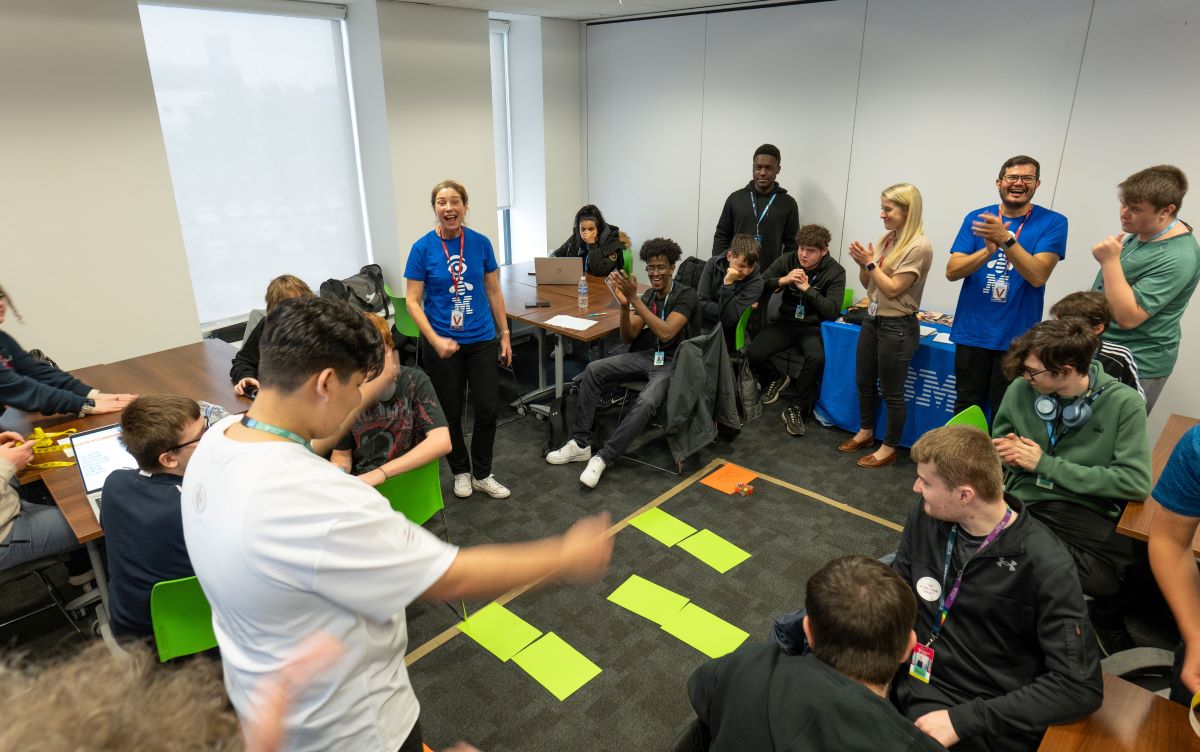Vocational education and training (VET) in FE: A question of ‘divide and rule’?

Setting up my argument
There is [also] a perception, deriving from centuries of social stratification and selectivity in the status and provision of different kinds of education in England, that vocational education is inevitably more narrowly utilitarian, less influential and less important than its more academic cousin: advanced (‘A’) levels. This divide between the sectors of ‘vocational’ and ‘higher’ education in many ways peculiarly English, is also reflected in higher education institutions and in occupations (in terms of academic credentials and a number of related provisions). These academic-vocational divisions in the ‘English model’, together with negative societal and political perceptions, have to some extent stymied the debate regarding the significance and relevance of vocational education provision to learning, work and the economy.
(Loo and Jameson, 2017, p. 1)
The above quotation was published five years ago. It formed a collection of chapter contributions from established academics with expertise in vocational education and training (VET) in the further education (FE) sector.
The reasons I am re-visiting this publication are 1. to ascertain if VET in the sector has moved on, and to do so; we need to examine the current situation, and 2. what lessons can we draw to see the future ahead for VET in FE. To do this, I would like to remind us of the sector’s characteristics in England, ascertain the current VET landscape, draw some tentative observations, and offer a possible way forward.
FE exhibits a porous ecology (Loo, 2022) with the two compulsory education sectors of primary and secondary (offering vocational courses for learners aged 14-16) on the one side and the higher education sector and professional education on the other. The sector is porous because its pedagogic activities overlap those of the different sectors on either side of FE. This in-betweenness is exemplified by the similarities in teaching, such as work-related courses in the secondary, higher and professional sectors. There are also FE/HE institutions that offer university-level programmes in partnership with affiliated HE institutions as accreditation bodies. These university-level courses may be at Level 4 and can go up to Level 8. Levels 1 – 3 are entry levels and commonly found in the FE sector, though some FE/HE institutions do offer university-level courses e.g., Foundation Degrees and Postgraduate Certificate of Education (Education Training Foundation (ETF), no date).
FE, historically, acts as an inclusive and widening participatory (and underpinning these is the notion of social justice) role to compulsory school leavers and beyond. These aims include both academic and vocational studies. The diversity of its institutions complements the porosity and inclusivity of FE. “FE providers include any institutions or organisations (other than schools or universities) that receive government funding to provide education and training to people over the age of 16 (some also offer courses for 14 and 15-year-olds). There are six types of FE providers: colleges, Independent Training Providers (ITPs), Local Authority (LA) providers, employer providers, third sector providers, and Adult Community Education (ACE) providers” (ETF, no date).
The largest provider is the General Further Education (GFE) Colleges, with 169 colleges (67%) and the next biggest provider, 61 Sixth Form colleges (23%) out of 266 colleges in England. VET accounted for 73.2% based on the number of staff by subject taught (teaching staff only), with the largest three areas: arts, media and publishing (11.2%), health, public services and care (10.3%) and engineering and manufacturing technologies (9.7%) making 31.2% of the total offers in the sector (ETF, 2019, Figure 39). The extent of FE’s diversity included 2.2 million learners in 2019, of which 1.4 million were adults, 685,000 were 16- to 18-year-olds, and 76,000 were 16- to 18-year-olds who undertook apprenticeships (Association of Colleges, 2019).
The characteristics of the sector are indicated above, and the following one looks at the current VET offers.
Current VET programmes
The Education Training Foundation (No date) listed the vocational qualifications on its website. The table below offers the readers the salient VET qualifications (ETF, no date):
| Vocational Education and Training programmes | Description | Levels (1-8) University levels start at 4 | Remarks |
| Apprenticeships | An apprenticeship is a job with training to industry standards. It involves working a minimum of 30 hours per week whilst receiving a formal programme of ‘off-the-job’ training (making up around 20 percent of the time). Apprenticeships can take one to four years to complete depending on the level. They are a great opportunity to gain job-specific skills whilst earning money and working alongside experienced staff in a chosen field. | Apprenticeships: 2-7 Degree Apprenticeships: 5-7 | With over 100 types, these are going to be employer-led standards. |
| Higher National Certificates (HNCs) /Diplomas (HNDs) | These are HE qualifications designed to provide learners with specialist skills relevant to their chosen career. HNC and HND courses often cover the same subjects but in different levels of depth. These are classroom-based delivery centred on practical learning. | Higher Nat. Certs: 4 Graduate Certs: 6 Higher Nat. Diplomas: 5 Graduate Diplomas: 6 | These qualifications are likely to be revised following the 2019 consultation. |
| National Certificates/Diplomas | Like the HNDs, these are at pre-university levels with practical emphasis. | 2-3 | On completion, learners may enter work or study at a higher level. |
| Technical Certificates | These qualifications prepare learners for jobs in specific industries e.g., construction, social care or hairdressing. | 2 | |
| Technical Levels | These qualifications develop the specialist knowledge and skills needed for a specific industry or job, e.g., engineering, IT or accounting. | 3 | The training covers work placements or projects. |
| Applied Generals | These qualifications provide learners with transferable knowledge and skills. | 3 | They focus on a vocational area, e.g., business or sport, rather than a specific job. |
| Branded Vocational Qualifications | Some awarding bodies offer branded qualifications. For example, you may have heard of a ‘BTEC’ diploma or a ‘Cambridge Technical’ certificate. | 1-7 | The awarding body is the organisation that designs the qualification. |
| T Levels | A new suite of two-year technical courses, known as T Levels, are due to be introduced in 2020. T Levels have been developed alongside employers and businesses so that the content meets the needs of industry and prepares learners for work. They will be available in 25 employment areas including accounting, agriculture, construction, engineering and IT. | 3 | T Levels will offer a mixture of classroom learning and ‘on-the-job’ experience during an industry placement of at least 315 hours (approximately 45 days). A technical qualification at Level 3 will be taken during the course. A T Level will be equivalent to three A Levels. These are designed by employers. |
| National Vocational Qualifications (NVQs) | NVQs are practical, work-based qualifications. In order to enrol on an NVQ it is necessary to be employed in the field of study. | 1-7 | They are assessed on completed portfolio of work using competencies. There is no time limit |
| Foundation Degrees | A foundation degree offers a combination of workplace learning and academic study. It is equivalent to an HND or two thirds of a bachelor’s degree. | 5 | There are no set entry requirements, and the duration is usually two years. |
| Postgraduate Certification of Education (PGCE) | A PGCE is a teacher training programme. It is the same level as a master’s degree. It is one of several routes into a career in teaching. It is a challenging, intense course which takes nine months of full-time study, longer if studying part-time. | 7 | It is mainly classroom-based and work placement with entry requirements. |
The 11 VET offers range from qualification levels 1 to 7. Levels 1 to 3 represent the FE or pre-university offers, and anything programme above Level 3 is classed as higher education. These programmes provide a combination of classroom-based (e.g., HNCs and HNDs), on-the-job (e.g., NVQs) and off-the-job (e.g., Apprenticeships) deliveries. Also, these qualifications may be industry-specific (e.g., Applied Generals, PGCE and T Levels) or job-specific (e.g., Apprenticeships, Technical Certificates). These qualifications may provide opportunities for further studies, usually in higher education, such as National Certificates/Diplomas and Foundation Degrees. The established VET qualifications include the Applied Generals, Branded Vocational Qualifications (e.g., BTECs), HNCs, HNDs and NVQs. The more recent additions (in different guises) are the Technical Certificates, Technical Levels and T Levels. The VET landscape in England is complicated with over 130 awarding bodies[1].
There appears to be an increasing proliferation of VET offers with varying permutations of qualification levels, delivery styles, and platforms for further study or work destinations.
The divide and rule concept defines as a way of segregating different factions of the disadvantaged applied to colonial societies (Morrock, 1973; Dixon et al., 2015). This concept offers an approach to interpreting the academic-vocational division. The ‘disadvantaged’ element may be interpreted as the FE sector and, within that, the VET offers. Traditionally, VET in England is framed around Levels 1-3, and work-related provisions in higher education (i.e., Levels 4 and above) are termed ‘higher vocational’. Of course, there are also professional education provisions at the professional level. These three work-related terminologies are constructed through historical socio-cultural dimensions. Internationally, VET may be known as technical and vocational education and training (TVET) (UNESCO, 2012). The academic and vocational division is also reflected in Australia, India and New Zealand (historically connected with the UK). In other countries like Germany, the three distinctions are unknown. Whether the divide and rule concept is particularly English is arguable, but there are corresponding cultures in other professions, such as accountancy (eight professional bodies in the UK[2]) and engineering (39[3]).
The final section provides for a way forward.
Is the current VET landscape the way forward?
From the previous section, the proliferation of VET qualifications and the divide and rule concept set up needless segregation in the educational landscape. This segregation is also mirrored in the VET research, as poignantly observed in the opening quotation and a systematic literature review on professional identities in the FE sector (Loo, 2019). In my conclusion of the findings on the professional identities of educationists in FE, there was a notable absence by researchers to acknowledge and factor in the vocational element in the sector, where “areas of investigation were not defined or contested as if there were tacit agreements amongst the academic fraternity” (Loo, 2019, p. 82). Wolf (2015) lamented that higher education debates occurred as though FE and adult training did not exist. Coffield (2006) was even more prescient than Wolf when he described England as not having an educational system but three poorly coordinated compulsory, FE, and higher education sectors. The present state of VET in FE, including its related research, requires a rethink.
In my next article, I will offer an approach to de-socio-culturalise the academic-vocational division and encompass the broadening of VET offers’ qualification levels whilst retaining the FE sector’s main characteristics. These characteristics are porosity, inclusivity, and widening participation underpinned by social justice.

[1]https://revisesociology.com/2020/05/29/vocational-education-in-britain-today/. Accessed: 30 May 2022.
[2] Key Facts and Trends in the Accountancy Profession. https://www.frc.org.uk/getattachment/669f6196-5a08-4a0b-aad3-b1915d4a6e4e/FRC-Key-Facts-Trends-2021.pdf#:~:text=Information%20is%20obtained%20from%20the%20following%20accountancy%20bodies%3A,the%20Association%20of%20Accounting%20Technicians%20%28AAT%29%20%28%E2%80%98all%20bodies%E2%80%99%29. Accessed: 29 May 2022.
[3] Professional Engineering Institutions. https://www.engc.org.uk/about-us/our-partners/professional-engineering-institutions/. Accessed: 29 May 2022.
References
Association of Colleges (2019) College Key Facts 2018/19. London: AoC.
Coffield, F. (2006) Running Ever Faster Down The Wrong Road: An Alternative Future For Education and Skills. Inaugural Lecture at the Institute of Education, 5th December, 2006. London, England: Institute of Education, University of London.
Dixon, J., Durrheim, K., Thomae, M., Tredoux, C., Kerr, P., and Quayle, M. (2015) Divide and Rule, Unite and Resist: Contact, Collective Action and Policy Attitudes among Historically Disadvantages Groups. Journal of Social Issues, 71(3), p. 576-596. Doi:10.1111/josi.12129.
Education and Training Foundation (no date) So What Is The FE Sector? A Guide to the Further Education System in England. London: ETF. Accessed @ 17 May 2022. https://www.et-foundation.co.uk/resources/publications/.
Education and Training Foundation (2019) Further Education Workforce Data for England: Analysis of the 2017-18 Staff Individualised (SIR) data. London: ETF.
Loo, S and Jameson, J. (2017) Introduction: Vocationalism in the English context. In Loo, S and Jameson, J. (Eds.) Vocationalism in Further and Higher Education: Policy, Programmes and Pedagogy. Abingdon: Routledge.
Loo, S. (2019) Further Education, Professional and Occupational Pedagogy: Knowledge and Experiences. Abingdon: Routledge.
Loo, S. (2022) Teacher Educators in Vocational and Further Education. Cham, Switzerland: Springer.
Morrock, R. (1973) The Effects of Colonialist “Divide and Rule” Strategy upon the Colonized Peoples. Science & Society, 37(2), p. 129-151.
United Nations Educational, Scientific and Culture Organization (UNESCO). (2012). Building Skills for Work and Life. 3rd UNESCO TVET Congress, Shanghai, 16 May.
Wolf, A. (2015) Issues and ideas. Heading for the precipice: can further and higher education funding policies be sustained? The Policy Institute at King’s College London, June 2015 Report. Retrieved February 2016: https://www.kcl.ac.uk/sspp/policy-institute/publications/Issuesandideas-alison-wolf-digital.pdf.











Responses